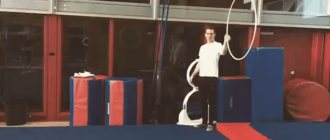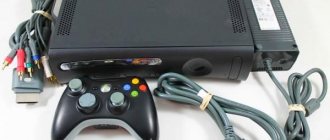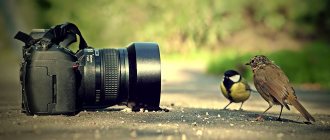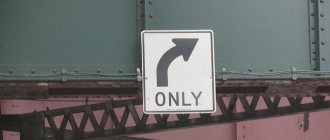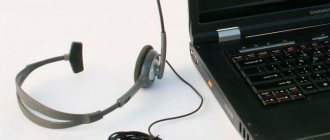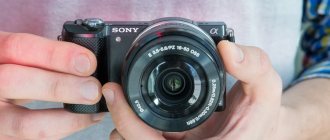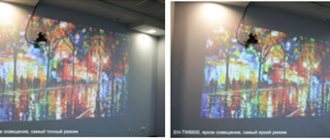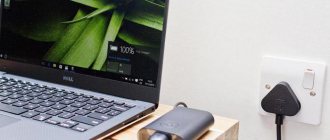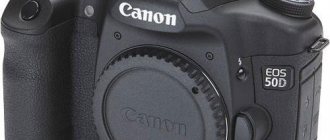When buying your first DSLR camera, you have a great opportunity, first of all, to take high-quality photos in low light . This could be filming at home, in a cafe at a holiday, at your children's graduation party, or at an event in a large hall.
indoor photos still turn out dull, blurry and not clear. How to avoid this? How to set up your camera to take great photos? This is exactly what we will talk about in this article.
Indoor photography can be divided into two categories : with flash (external) and without flash. Each category has its own advantages and disadvantages . Let's take a closer look:
Photo indoors without flash
This is the first thing an amateur photographer encounters when purchasing a DSLR camera. After all, there is no external flash yet, and the built-in one only spoils the frame, giving it the look “as if from a point-and-shoot camera.”
Therefore, to get great photos you will need to do the following:
— Set the shooting mode to Manual . In this mode, you can adjust the shutter speed and aperture yourself.
— Open the aperture . Those. if you have a Nikon AF-S DX Nikkor 18-105 mm F 3.5-5.6 G ED VR lens, try to always keep the f/ value minimal (f/3.5).
— Go to ISO and set AUTO-ISO: 1600 . This means that the camera itself will set the ISO value (photo sensitivity) in the range from 100 to 1600.
— All that remains is to set the shutter speed correctly. If you photograph sedentary people (who are sitting, standing, posing, etc.), feel free to set the shutter speed to 1/40s - 1/60s . But if your task, for example, is to photograph children in motion, then the shutter speed should be at least 1/125 or shorter.
That's basically all. These are the basic settings you need for low light photography. Remember, if your pictures turn out dark , then you can raise the AUTO-ISO to 2000 or higher, and also set a longer shutter speed, say 1/20s - 1/10s . (but in this case, you need to hold the camera steady so as not to get blurry shots due to hand shake).
The main thing is practice ! Remember, if you are shooting during the day, try to place your subject next to open large windows and sources of natural light. In this case, the results will be much better if the windows are covered with curtains. In the dark, try to turn on all kinds of lamps/chandeliers/lights, etc. to ensure a large amount of light falls on the camera sensor.
How else can you improve the quality of your photos?
You must understand that even if you buy a camera for $1000 , which comes with a standard (kit) lens, you will not always get perfect pictures. The reason for this is the lens , because This is the most important part in the camera. Basically , the quality of your photos depends only on the lens. Therefore, pay attention to high-aperture optics . For beginners, I strongly recommend purchasing a 35mm f/1.8 or 50mm f/1.8 prime lens , because... they have a huge aperture ratio, which will help you when shooting in dimly lit rooms, and their price of $200-300 will be affordable for everyone, and they also have focal lengths acceptable for shooting.
But keep in mind that using a prime lens you will not have the opportunity to “zoom”, i.e. zoom in/out. If for some reason you are not satisfied with such lenses, pay attention to fast zooms . They are much more convenient than fixes, because... They save you from having to walk back and forth to zoom in/out on your subject, but they have two drawbacks:
1. This is the price . Such lenses are much more expensive (at least 5 times) than regular 35/55mm primes.
2. Aperture . All existing zoom lenses currently have an aperture of f/2.8.
How to Take a Good Indoor Portrait Without Using a Flash
How and in what mode to take photographs indoors? Beginning photographers have a lot of difficulties with this. The article will primarily focus on creating an artistic portrait, and not on a souvenir photo. In this case, we must not only capture some moment in the photo, but also try to make the frame beautiful and aesthetically pleasing.
NIKON D810 / 85.0 mm f/1.4 SETTINGS: ISO 125, F2, 1/125 s, 85.0 mm equiv.
From the camera's point of view, the lighting in any room will be insufficient. Therefore, you need to think about the shooting location, and do not forget about the correct settings.
Of course, there is always the option of using flash. But the built-in flash will not provide very beautiful, flat lighting, and ugly glare may appear on the model’s face. The same thing will happen with an external flash if you point it frontally, at the forehead. But if you turn it towards the ceiling, the lighting will be more natural. But not everyone has an external flash. In addition, by shooting with available light rather than with flash, you can get interesting, more interesting lighting.
Shot taken with head-on flash. The lighting turned out to be unsuccessful, and unpleasant glare formed on the face.
NIKON D810 / 85.0 mm f/1.4 SETTINGS: ISO 100, F1.4, 1/125 s, 85.0 mm equiv.
To get high-quality shots, it is important to choose a well-lit place. You can take pictures near the window. It is best to turn the model slightly sideways to the window, then the lighting will fall on the face naturally, emphasizing its volume. But it makes no sense to shoot against the background of a window: the face itself will not be illuminated and will most likely turn out dark, and the window will come out too light.
A good option for indoor photography is to photograph near a window.
NIKON D810 / 85.0 mm f/1.4 SETTINGS: ISO 200, F1.4, 1/160 s, 85.0 mm equiv.
Of course, it must be light outside the window so that the light falls on the model’s face. To further soften the lighting so that unpleasant contrasting shadows do not appear on the face, the window can be covered with tulle or a light curtain.
In addition to the window, there are other sources of lighting in the room. Use them! A person can be placed under the light of a floor lamp or table lamp. Compose the frame so that no extraneous, distracting household objects fit into it. On the occasion of photography, the house can also be cleaned.
An interesting technique when working in a confined space is to shoot through a mirror. When we're photographing in a tight space, shooting through a mirror will help visually expand the space in the photo.
How to set up your camera when photographing indoors? When we shoot a story in low light, the first thing we need to do is keep an eye on the shutter speed. If it turns out to be too long, the picture may become blurred both from camera shake in the hands and from the movements of our model. A person cannot completely freeze in place, so it is worth shooting at shutter speeds shorter than 1/60 s. The most convenient way to control shutter speed is in mode S (“shutter priority”).
When shooting indoors, it is convenient to use high-aperture optics. It will allow you to shoot in poorer lighting with a shorter shutter speed, and it will blur the background more beautifully. At the same time, it is not very convenient to work with long-focus lenses indoors. Therefore, for cameras with an APS-C matrix, it is appropriate to use lenses with a focal length of 28 mm (Nikon AF-S 28mm F/1.8G Nikkor), 35mm (Nikon AF-S 35mm f/1.8G DX Nikkor) or 50 mm (Nikon AF- S 50mm f/1.4G Nikkor). For full-frame cameras, 35mm (Nikon AF-S 35mm f/1.8G ED Nikkor), 50mm (Nikon AF-S 50mm f/1.4G Nikkor), 85mm (Nikon AF-S 85mm f/1.8G Nikkor) are suitable. You can use shorter focal length optics if there is not enough space for shooting, but it is important to remember that short focal length optics can distort the proportions of the faces and bodies of our heroes.
As always, we encourage readers to share their indoor portrait photos.
Photo indoors with flash
No matter how much you love shooting without flash , even with professional high-aperture optics, there is not always enough lighting to take a good shot. For example, in this photo, taken indoors , you can’t do without a flash, although it was shot with a professional fast zoom lens Nikkor 24-70 f/2.8 , costing more than $1800:
I would like to immediately note that by flash we mean not a built-in flash, but an external flash . Only with it you can achieve excellent results by evenly illuminating the subject. When shooting with an external flash, you should set the following settings:
— Shooting mode: Aperture priority ( A - in Nikon models, Av - in Canon models on the mode dial). This mode allows us to adjust only the aperture, and the camera sets the shutter speed itself.
— If you are not yet well versed in ISO settings, you should set AUTO-ISO: 800 , or even less, because When shooting with flash, you don't need high ISO values.
— Set the flash pulse power . This is done on the flash itself using the more/less buttons, i.e. If you get dark images, set the pulse power to plus (+); if you get very overexposed images, set them to minus (-).
We've sorted out the settings, now we need to understand the technique of shooting with an external flash . Its main advantage is the rotating head , which allows you to direct the light pulse in different directions.
Always try to point the flash head not directly at the subject, but to the side , so that the light reflects off the nearest wall and falls evenly on the subject. Surely you have noticed that professional photographers always have the flash head turned up/towards the side? This is done in order to reflect light from the ceiling/walls and evenly illuminate the person being photographed.
When you simply have nowhere to reflect the light , i.e. There are no walls next to the subject, and the ceilings are too high, take out the reflector (white paper, found in almost all modern flashes). The light will be reflected from it and also fall evenly on the person.
Pointing the flash head directly “ at the forehead ” is only worthwhile in cases where you are far from the subject being photographed (more than 3-4 meters).
CONCLUSION
Analyzing this article, we can come to the conclusion that the ideal option for indoor photography would be to have both high-aperture optics and a good external flash . After all, high-aperture optics allow you to take excellent shots with complete immersion in the atmosphere of the image, i.e. “as is”, the photographs come out alive and real. And the use of an external flash will always come in handy in those moments when the illumination of the room is extremely low and no optics can cope with its task.
And if you combine these two methods (shooting with high-aperture optics + external flash), you can get such wonderful shots:
Do you have any questions about indoor photography or interior photography? You can ask them in the comments to this article, consultations are free and free of charge for everyone! © Phototricks.ru
© Phototricks.ru
How to take photographs in a dark room
Today we will try to look at the software shooting modes on an entry-level compact camera or ultrazoom. Let’s immediately make a reservation that this article is more intended for those who have recently picked up a camera, and I do not yet intend to delve into complex discussions about the interchangeable optics of DSLRs and the ISO number. This information will be useful for those who have a point-and-shoot camera with variable settings, a switchable flash, and want to photograph an unusual evening view, a portrait or a still life by candlelight in a dark room.
The goal is to help a beginner who has an entry-level budget compact camera learn how to take interesting, beautiful photographs in the dark (more precisely, in low-light conditions) without a flash. Candlelight photography is offered as an example: take photographs in low light, where there is little light, but interesting objects , probably everyone who has ever held a camera wanted it. Actually, the article is for those who have a beautiful bouquet on the table and who, perhaps for the first time, were dissatisfied with how the photo turned out with a flash. Or perhaps you have a beautiful burning candle, the contemplation of which directs your thoughts to the idea that it would be nice to shoot a beautiful still life or even a portrait in soft lighting. One way or another, you have a point-and-shoot camera with a set of subject programs. You need to photograph the subject in the dark, or at least in low light, such as a candlelit subject. First, let's look at the large selection of scene programs designed for evening shooting. They are often called differently in different cameras, but are based on similar principles. So what are they called? Night landscape (often the moon and stars icon) - on most compact cameras allows you to turn off the flash. Night portrait (often a person icon, stars above it) Be careful, night portrait most often involves the use of flash along with a long shutter speed. This mode is designed to photograph a person with a background - a landscape, the night sky, car headlights on the road. Therefore, a flash is used for the foreground - otherwise the person’s face will be blurred. But for the background under such shooting conditions, clarity is not so important. Portrait by candlelight (candle icon, respectively) Allows you to turn off the flash. Reproduces the color of objects photographed by candlelight. That is, there will be a warm range. Intelligent mode - recognizes what you are filming and selects the most suitable one from all scene programs. Also allows you to turn off the flash. Auto - works differently in different cameras. For most compact cameras, you can turn off the flash - for this there is a button with a crossed out lightning flash, shoot in automatic mode - it will adjust for shooting in low light conditions. No other settings are provided. P - program mode close to automatic. You can change the white balance and iso value. Even if it’s difficult for you to figure it out now, you can still safely set this setting - it’s very simple, it will work no worse than the automatic one without your participation. and finally, hurray! manual setting is the same completely manual mode that we will try to learn how to use for shooting in the dark. This mode is designated M - manual, manual mode, here everything is in the power of the photographer, you set the shutter speed and aperture of the camera yourself. But the camera will tell you a lot... Let's turn off the flash. This time. Let's find something that can replace a tripod for us at first. If you have a tripod, please use it. There is no way to take clear pictures in the dark, when there is little light, without a tripod. However, maybe, but only in one case, we will consider it separately. Let's set one of the night shooting modes. These are automatic modes. They can be used for photography in the dark, but there is only one “but” - you need a tripod. Otherwise everything will be blurry. So, let's pull out a dark corner and place a still life there. We will make the shooting conditions difficult, and even by candlelight. It’s completely impossible to read in such a dark place, but let’s try to take photographs. Where are our story programs? select one by one: Night landscape Although we do not have a landscape, but a still life, we will still photograph it in this mode.
